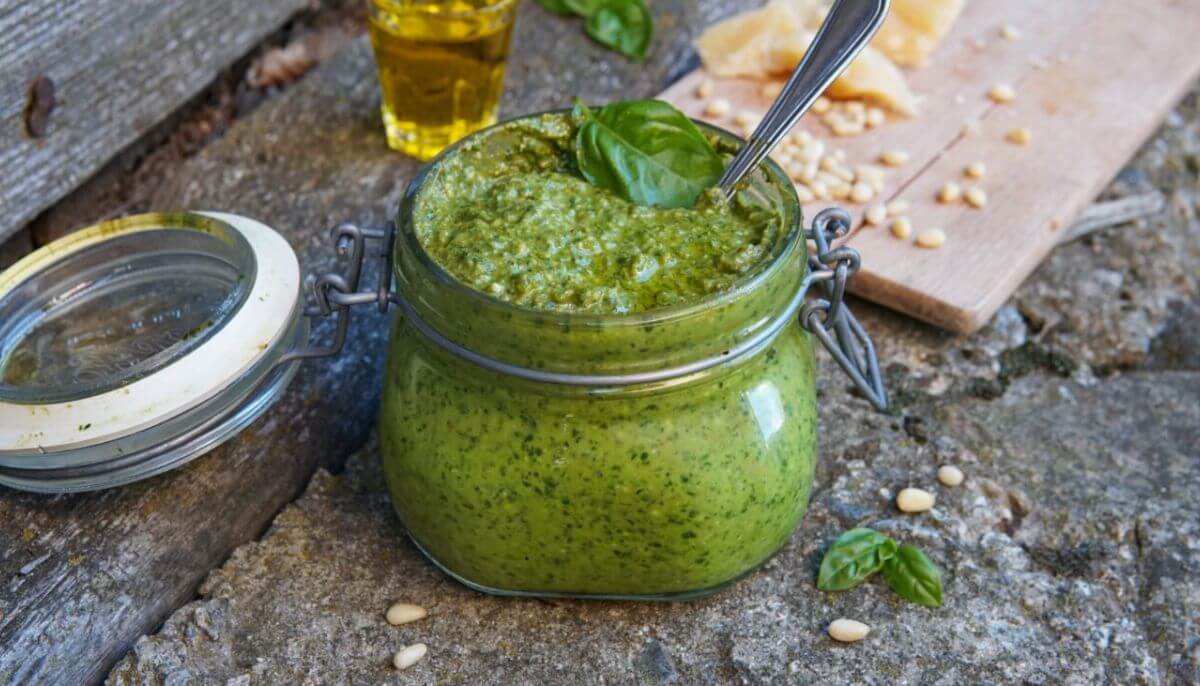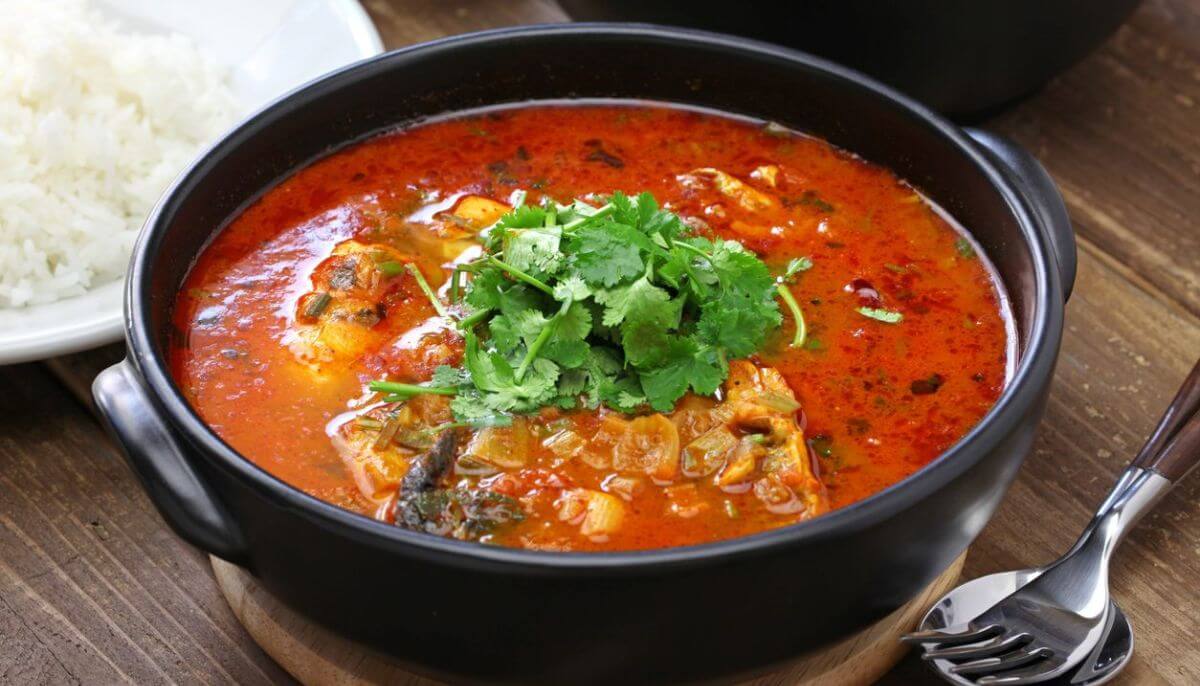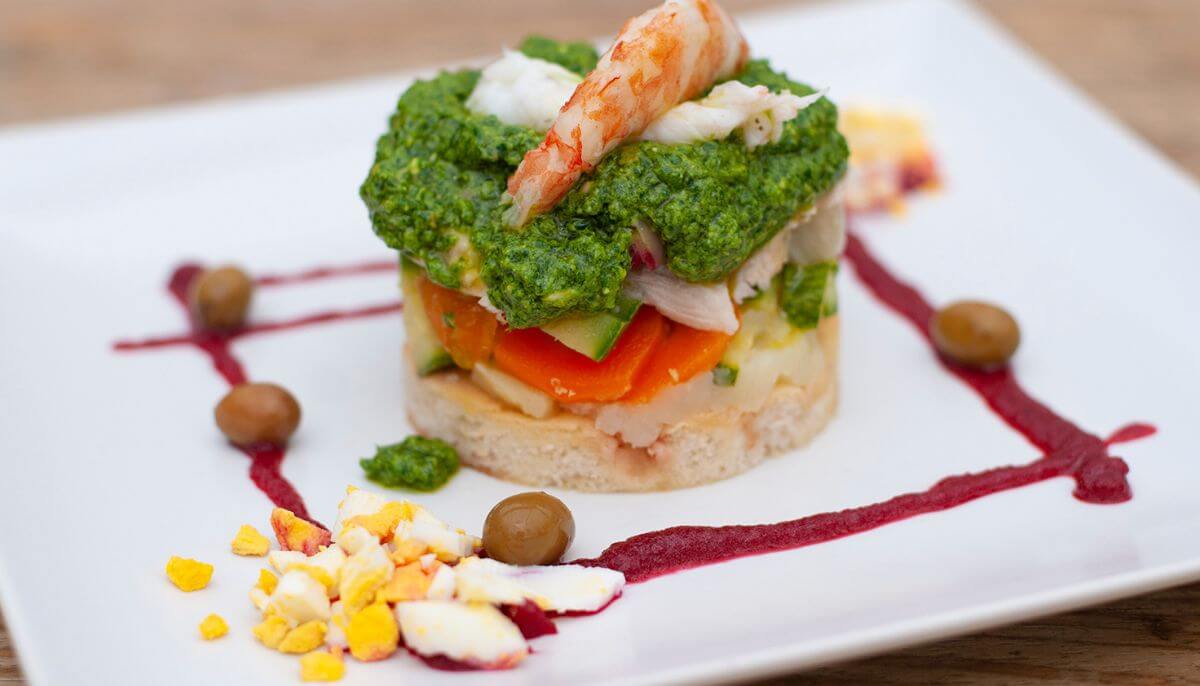
The XIX century was its golden age, and with the revival of historical research and investigation into customs and traditions of Liguria, a first collection of cookery recipes was published by G. B. Ratto with his “Cuciniera Genovese”; in it, the author not only gave excellent instructions and advice on the proper preparation of savory food but reminded cooks that they were artists requiring a delicate palate and good taste to maintain intact their sensibility and instinct, these being more necessary to them than scales to achieve perfection.
The larder should be well stocked with all ingredients for seasoning, from tomato sauce to the most appreciated spices. All herbs, but especially aromatic ones such as basil, marjoram, borage ” cornabuggia” and sage, played an important part in the preparation of the “savori” necessary for many traditional dishes.
The most typical Genoese sauce is the “Pesto” made of basil, parsley, garlic, marjoram, grated parmesan, and Sardinian cheese all pounded together in a mortar and reduced to a pulp that, mixed with olive oil forms the dressing for “Lasagne”, for minestrone and for the famous “Trenette “.
The most renowned, the superdish par excellence, in Genoa is the Raviolo.
This is a small square of paste folded across and over some stuffing the richness of which varies with the importance of the occasion. A recipe includes veal fried in butter, udder of veal, brain, sweetbread, eggs, parmesan cheese, and a leaf of marjoram. The paste is folded across and pinched to make it hold, then boiled in water and served like maccaroni, with “tocco”, or in broth as a soup.
Sometimes this stuffing is wrapped round with lettuce leaves and boiled in broth – very delicious. Another favorite dish is “Minestrone”, the making of which the entire kitchen garden contributes with its seasonable products: beans, potatoes, eggplant, french beans, cabbage, tomatoes, dried mushrooms, vegetable marrow and zucchini, olive oil, and lastly – pesto.
It should be served so thick that the spoon stands up in it.

The traditional “Buridda” today is confused with “Caciucco” or “La Bouillabaisse”; it is not a soup but a sort of stew made of rockfish, that varies from place to place. In Spezia instead of mussels, erroneously called sea dates, real dates are used, that are called sea truffles there.
Portovenere makes a speciality of buridda.
Another soup is ” La Sbirra”, so called because, at the Doges’ palace, it was served to the troops as soup and dish in one. Tripe, broth, toast, and grated cheese are its staple ingredients. “Prepoggion” not to be confused with minestrone, is another vegetable soup made of beet, cabbage, and pesto; it used to be considered very refreshing, and eaten in spring.
Lord of all stuffings is “Cima Piena“, brisket or thin loin of veal stuffed with a mince of eggs, cheese, peas, sweetbread, veal, artichokes, or mushrooms according to the time of year, boiled, and eaten cold cut in very thin slices.
A real chef d’oeuvre – when it turns out well – is the “Cappon Magro“, the making of which go parsley, capers, anchovies, Spanish olives, pounded with oil and vinegar, cauliflower, french beans, celery, carrots “scorzanera” (purple goat’s beard), first quality fish, lobster, and mushrooms; it is a very pretty dish, both pleasing to the eye and appetizing, and is set off beautifully with a garniture of shrimps and squares of vegetables all round the plate.
The “Capponada” is a seaman’s dish, recommended against seasickness; sea biscuit moistened with oil, salt, capers, anchovies, and “mosciame” (slices of dry dolphin).

Stockfish “alla Genovese” is prepared with burridda highly seasoned and garlic.
A spring dish is Torta Pasqualina; many layers of paste with between artichokes or beet, eggs, cheese, and curds, one on top of the other and baked.
At Christmas time not a table in Genoa lacks a “Pandolce” a sort of loaf full of currents and raisins, candy, pine kernels, pistachio, and fennel seeds. It is very different from panettone, being much denser and richer.
Liguria does not produce a great variety of wines. Its vineyards have been painfully claimed from the bare slopes of the Apennines and set out in terraces that yield delicious and fragrant white wines somewhat resembling the Rhenish ones.
The vineyards along the coast produce dry and sweet wines squeezed from sun-kissed grapes, wines pleasant to the palate and that can be drunk freely without fear of their going to one’s head. They are served with hors d’oeuvres and throughout the meal, but with the sweets the golden “Sciacchettrà” of the Cinque Terre is served.
Very good red wines are made at Lerma, Belforte, Rocca Grimaldi, and Tagliolo.
As a rule food in the restaurants in Genoa and the whole of Liguria is excellent.
Lovers of fine views should go up to the roofs of the skyscrapers; lovers of the sea should patronize the restaurants along the coast; but lovers of the characteristic and picturesque should penetrate into the narrow streets where the fry-shops are, or descend to the taverns of Sottoripa with their sailors atmosphere.
The catering places call themselves ” Gino”, “Nino”, ” Adolfo”, ” Tavernetta Gran Gotto”, “Cucciolo”, and” Buca di S. Matteo”. And what about the famous Paciugo ice cream?
Portofino: a world apart. 🐬
